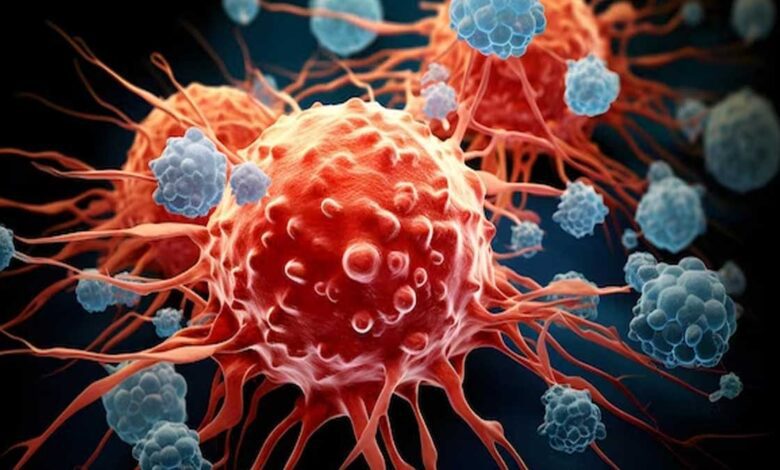Has IISc found a way to treat cancer by new hybrid nanoparticles?
Using ACS Applied Nano Materials, early detection and treatment are essential in the fight against cancer. While gold nanoparticles, which may be chemically altered to target cancer cells, have demonstrated anti-cancer benefits, copper sulfide nanoparticles have previously attracted interest for their use in cancer diagnostics.

Researchers at the Indian Institute of Science (IISc) have created a novel method that may be used to identify and eradicate cancer cells, particularly those that form solid tumor masses.
According to a research published in “ACS Applied Nano Materials,” they have developed hybrid copper sulfide and gold nanoparticles that may heat-kill cancer cells and enable their detection using sound waves.
IISCs, Early detection and treatment are essential
The IISc, situated in Bengaluru, stated in a statement on Monday that early detection and treatment are essential in the fight against cancer. While gold nanoparticles, which may be chemically altered to target cancer cells, have demonstrated anti-cancer benefits, copper sulfide nanoparticles have previously attracted interest for their use in cancer diagnostics.
In the current study, the IISc team decided to combine these two into hybrid nanoparticles.
“These particles have photothermal, oxidative stress, and photoacoustic properties,” says Jaya Prakash, Assistant Professor at the Department of Instrumentation and Applied Physics (IAP), IISc, and one of the corresponding authors of the paper. PhD students Madhavi Tripathi and Swathi Padmanabhan are co-first authors.

When light is shined on these hybrid nanoparticles, they absorb the light and generate heat, which can kill cancer cells. These nanoparticles also produce singlet oxygen atoms that are toxic for the cells, the release pointed out. “We want both these mechanisms to kill the cancer cell,” Jaya Prakash explains.
The nanoparticles, according to the researchers, can also aid in the cancer diagnosis process.
Existing techniques like standalone CT and MRI scans need qualified radiology specialists to interpret the results. Once the nanoparticles reach the cancer cells, their photoacoustic ability enables them to absorb light and produce ultrasound vibrations, which may be utilized to detect cancer cells with great contrast.
Since sound waves scatter less in tissue than light waves do when they travel through it, the ultrasound waves produced by the particles provide a more precise picture resolution. It was discovered that ultrasound scans produced from generated ultrasonic waves can also offer improved clarity and can be utilized to evaluate the oxygen saturation in the tumour, enhancing their identification.
“You can integrate this with existing systems of detection or treatment,” says Ashok M Raichur, Professor at the Department of Materials Engineering, and another corresponding author.
For instance, by focusing a light on the nanoparticles with an endoscope, which is generally used for cancer screening, the nanoparticles may be made to emit heat.
The huge size of previously created nanoparticles has hampered their usage. The IISc team applied small gold seeds to the copper sulphide surface using a brand-new reduction technique. Less than 8 nm in size, the resultant hybrid nanoparticles have the ability to quickly penetrate tissues and reach tumors.
Although considerable study must be done to identify whether nanoparticles are safe to employ within the human body, the researchers believe that their small size would also allow them to depart the body naturally without collecting.
In the present work, the researchers used lung cancer and cervical cancer cell lines to evaluate their nanoparticles in the lab. They now intend to advance the findings for clinical development.
Please, also have a look into : India’s drug regulator alerts doctors and patients about fake liver, cancer drugs



